#takeuchi ryoko
Explore tagged Tumblr posts
Text

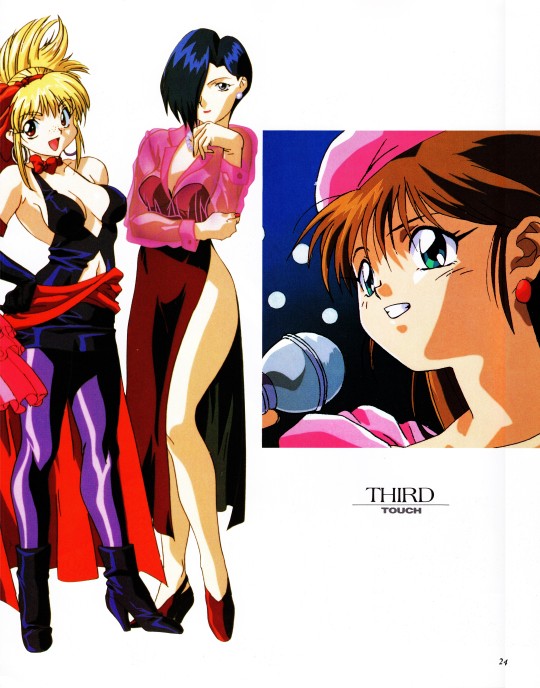
Blue Seed Fujimiya Momiji Shashinshuu - Touch! Roman Album (1995)
#blue seed#ブルーシード#momiji fujimiya#fujimiya momiji#kaede fujimiya#fujimiya kaede#kome sawaguchi#sawaguchi kome#sakura yamaguchi#yamaguchi sakura#ryoko takeuchi#takeuchi ryoko#90s anime#retro anime#classic anime#vintage anime#anime fashion#my scans#my best friend got this for me and i'm so happy#was so excited when i saw it#anything blue seed related is sure to make my day#the book also has quite a few images of momiji and mamoru as well#so expect some of that
59 notes
·
View notes
Photo









Odds and ends from Blue Seed 🍃
#Blue Seed#Aokushimitama Blue Seed#Fujimiya Kaede#Sawaguchi Koume#Takeuchi Ryoko#Yamazaki Sakura#Kunikida Daitetsu#Yaegashi Yoshiki#Matsudaira Azusa#odds and ends#iconnot icons#source: anime#source: '90s anime#source: ops/eds
15 notes
·
View notes
Photo

















































2018-07-15:
KMR(Kimura Yuito), FKHR(Fukuhara Tetsuya), Ono Yuki, Takeuchi Shunsuke, Ueda Kana, Ryō Hirohashi, Shiraishi Minoru, Shiraishi Ryoko, and Katou Emiri from the Granblue Summer Stream 2018 streamed via NicoNico Douga, Freshlive.tv, and Youtube.
#Granblue Fantasy#GBF#KMR(Kimura Yuito)#Kimura Yuito#FKHR(Fukuhara Tetsuya)#Fukuhara Tetsuya#Granblue Summer Stream 2018#Ono Yuki#Yuki Ono#Takeuchi Shunsuke#Shunsuke Takeuchi#Ueda Kana#Kana Ueda#Ryō Hirohashi#Hirohashi Ryō#Shiraishi Minoru#Minoru Shiraishi#Shiraishi Ryoko#Ryoko Shiraishi#Katou Emiri#Emiri Katou#Shiraishi Ryoko wanted to convey her idea for making December Granblue's Fest more exciting but the idea on the sketch book ended up close--#---close to something better off not be drawn went off course#Shiraishi Ryoko's idea is Societte's tail keychain a Loki and Societte hair pin and fluffy slippers#For the ending message portion of the event TakeP has a Vane fan#Seiyuu
1 note
·
View note
Photo

Ryoko Hirosue & Mariya Takeuchi reunite 23 years later for "Kimi no Smile"
The animated MV for Ryoko Hirosue‘s track “Kimi no Smile” has been uploaded on YouTube, the track was written and composed by the legendary Mariya Takeuchi. This is the first time the two have worked together since Ryoko’s very cute debut single “Maji de Koi Suru 5you Mae” released back in April 1997. The song […]
Read more on aramajapan.com
1 note
·
View note
Text
LGBT+ representation in anime and manga
Queer (queer will be used as an umbrella term for non-heterosexual nor cisgender identities) people have always been present throughout human history, which obviously includes Japan’s. As a matter of fact, there are a lot of literary works that include queer characters through its history, for instance, during the Edo period Ihara Saikaku wrote The Life of An Amorous Man (1682) which has a bisexual person as the main character. Moreover, at the time Ihara Saikaku also wrote The Great Mirror of Male Love (1687) which was intended to represent the different ways men of that period’s society loved other men, and apparently it was also expected to be the best-seller of the year when it was released. Therefore, to understand queer representation in anime and manga we must keep in mind examples as the above-stated that show how Japan have always had some kind of LGBT+ content throughout its history in their works even though the country is not very developed in terms of rights for their LGBT+ community.
Starting from the 50s there are a handful of characters that are said to be some kind of representation for the LGBT+ community due to things that might be implied or might be more direct about it. To illustrate the former we can name General Blue a character from Dragon Ball (by Akira Toriyama, 1984) whose homosexuality it is not expressed explicitly but implied through subtle actions or scenes. In the latter's case where the representation is more explicit, there is Shiroi Heya No Futari (by Ryoko Yamagishi, 1971), that is considered to be the first manga of the yuri genre (girl’s love) and tells the story two girls that fall in love in a catholic school and suffer from being rejected by others because of them being lesbians.
What’s more, towards the 90s we can see real same-sex couple that are canon and were not from the yaoi or yuri genres, for example: Sailor Moon (by Naoko Takeuchi, 1991) & Tokio Babylon (by CLAMP, 1990). Sailor Moon had the famous lesbian couple of Sailor Uranus and Sailor Neptune. Likewise Tokio Babylon had a gay couple between Seishiro Sakurazuka and Subaru Sumeragi. CLAMP not only made one manga with queer representation, afterwards they published Card Captor Sakura (1996) which show us the obvious love feelings that Tomoyo Daidouji has for her best friend Sakura Kinomoto (the main character), moreover it also includes one of the most iconic gay relationships in the history of manga an anime, Touya Kinomoto and Yukito Tsukishiro.
Starting from 2000 the number of anime and manga in the yaoi and yuri genres increased, a well-known example of one of these genres is Junjou Romantica (by Shungiku Nakamura, 2002) which portraits gay relationships but way more sexualized and a plot less romantically driven. Like that we can also see a development in the fandom culture, and for that reason what we know nowadays as fanservice increased alongside with fake queer representation in both anime and manga, but especially in anime. Hence the creation of a concept like Queerbaiting, a concept that refers to some kind of marketing technique that creates romantic or sexual tension between characters of the same-sex to attract queer viewers, however relationship never becomes canon nor evolves into something more (Urbandictionary).
Henceforth we began to see way more supposedly “queer” characters in anime and manga, however we should ask ourselves “How many of those queer characters are a real representation of the LGBT+ community?”. Thankfully, these days we have some very good LGBT+ representation in manga like Shimanami Tasogare (by Yūki Kamatani, 2015) and Boku ga Otto ni Deau made/Until I Meet My Husband (by Nanasaki Ryousuke).
In conclusion, it must be said that even though Japan is still a pretty patriarchal and hetero-normative society, that has yet to develop in terms of LGBT+ rights, it’s pretty interesting how daring were some Japanese people in the past to write stories about queer characters. Hopefully, these days we can get to see a more accurate queer representation in manga and anime that could help someone who can relate to these stories or give the courage to some others to live their life more freely and be themselves.
by Francisco Vásquez Gatica
6 notes
·
View notes
Text
Clock over ORQUESTA (クロック・オーバー・オルケスタ)
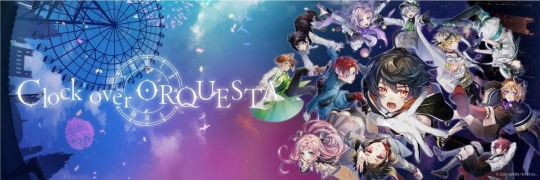
Clock over ORQUESTA (クロック・オーバー・オルケスタ)
Project: Character Song
By: viviON
Webiste: https://clockoverorquesta.com
Twitter: https://twitter.com/ClQST_info
Start: March 2021
Teaser Movie: https://youtu.be/L6ntGKigmis
youtube
This work uses the voting on Twitter, and the story progresses in a multi-ending
The 12 protagonists have been taken by the mystery who called 'Tink' to the Dreamland, "Never!and"
And transforming everyone into children to fulfill a wish
They couldn't go home if they were lose, only to win to survive.
Which one will you choose to survive?
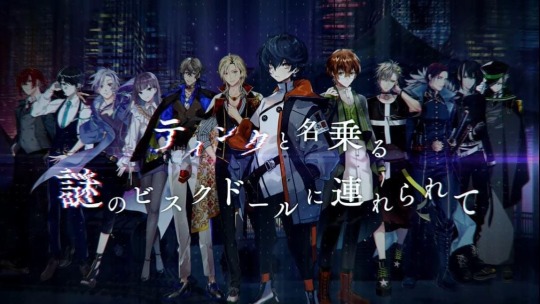
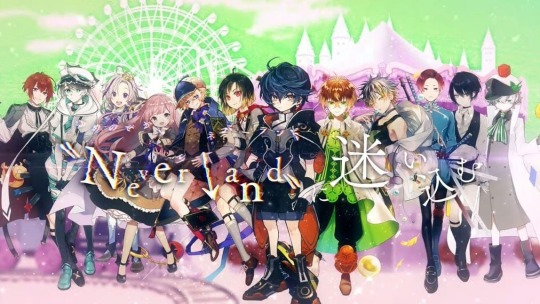

Cast
Ichiya Tokito CV: Yamashita Daiki #山下大輝
Neverland ver. CV: Tamura Mutsumi 田村睦心
Character Design: Mephisto (https://twitter.com/MEPHIST0216)
Image Song: 40mP
Sakurakoji Nika CV: Toshiyuki Morikawa #森川智之
Neverland ver. CV: Minagawa Junko 皆川純子
Character Design: Tomida Tomomi (https://twitter.com/tomitomo_)
Image Song: 164
Azusawa Mito CV: Hattori Sounosuke #服部想之介
Neverland ver. CV: Shiraishi Ryoko 白石涼子
Character Design: Sazanami (https://twitter.com/3373misa)
Image Song: Scop
Tsuyuri Azuma CV: Okiayu Ryotaro #置鮎龍太郎
Neverland ver. CV: Sanpei Yuko 三瓶由布子
Character Design: Kyouichi (https://twitter.com/kyouichi_16)
Image Song: John
Otoha Iosuke CV: Noda Tetsuro #野田てつろう
Neverland ver. CV: Ise Mariya 伊瀬茉莉也
Character Design: Hakuseki (https://twitter.com/_hakuseki_)
Image Song: Pinocchiop
Tenma Rikka CV: Murase Ayumu #村瀬歩
Neverland ver. CV: Kaneda Tomoko 金田朋子
Character Design: Kuroyuki (https://twitter.com/krykkk)
Image Song: Nashimoto ue
Teama Nanase CV: Hino Satoshi #日野聡
Neverland ver. CV: Inoue Marina 井上麻里奈
Character Design: Kitajima Azuma and jin8pati
Image Song: rerulili
Sasaki Yairo CV: Horiuchi Kenyu #堀内賢雄
Neverland ver. CV: Paku Romi 朴璐美
Character Design: Karakara Kemuri (https://twitter.com/kara2kmr)
Image Song: Minato(流星P)
Kokonoe Konoe CV: Tachibana Shinnosuke #立花慎之介
Neverland ver. CV: Sato Rina 佐藤利奈
Character Design: Karasumaru (https://twitter.com/karasumaru09)
Image Song: keeno
Huwa Tokihito CV: Toriumi Kohsuke #鳥海浩輔
Neverland ver. CV: Takeuchi Junko 竹内順子
Character Design: Arisaka Ako (https://twitter.com/stem04)
Image Song: Nem
Harumi Kazuto CV: Yamaji Kazuhiro #山路和弘
Neverland ver. CV: Hisakawa Aya 久川綾
Character Design: Yasuda Suzuhito (https://twitter.com/suzupin)
Image Song: YASUHIRO(康寛)
Tokito Reiji CV: Midorikawa Hikaru #緑川光
Neverland ver. CV: Ogata Megumi 緒方恵美
Character Design: Fuyuomi (https://twitter.com/fuyuomi)
Image Song: sasakure.UK
Tink CV: Mino
Character Design: Shikimi (https://twitter.com/keeggy)
#クロケスタ #CD #SNS #Music #Song #VoiceDrama
34 notes
·
View notes
Photo
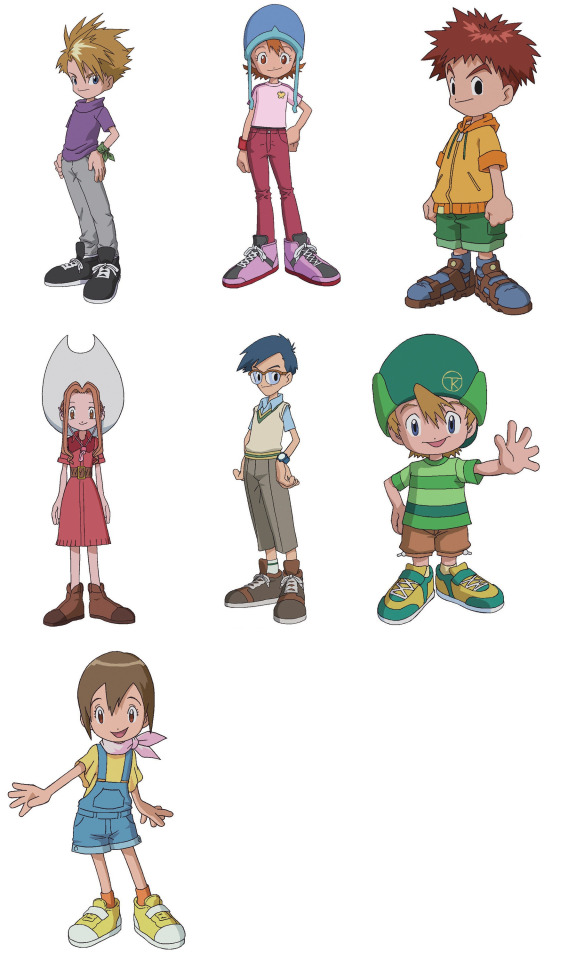
youtube
A new promotional video, character designs, and main cast lineup for the “Digimon Adventure:” TV anime series has been revealed. It will have its broadcast premiere April 5th on Fuji TV; 9AM JST Sundays.
-Synopsis-
“2020 AD.
Networks are now an integral part of human life. But humans are unaware that beyond the network an infinite world exists. The digital world. And the creatures called Digimon that live there…
A large-scale network failure occurs in the Tokyo metropolitan area. A flickering signal or garbled screens are prevalent. The news report that it’s cyber terrorism.
The main character is Taichi Yagami, a fifth-grader living in a tower apartment near Tokyo.
He was home alone to prepare for the weekend summer camp. His mother and sister, Hikari, were on their way to Shibuya but got stuck on an affected train with failed breaks. Taichi hurries to Shibuya to help his mother and sister, but the moment he heads to the platform at the station-
A mysterious phenomenon overtakes the “DigiDestined,” transporting Taichi to the digital world! The children meet their partner Digimon and embark on an unknown “adventure!”
-Staff-
Producer: Hiroyuki Sakurada
Series Director: Masato Mitsuka
Series Composition: Atsuhiro Tomioka
Character Design: Katsuyoshi Nakatsuru
Production: Toei Animation
-Cast-
Taichi Kamiya (CV: Yuuko Sanpei)
Yamato Ishida (CV: Daisuke Namikawa)
Sora Takenouchi (CV: Ryoko Shiraishi)
Koushiro Izumi (CV: Yumiko Kobayashi)
Mimi Tachikawa (CV: Marika Kouno)
Jou Kido (CV: Takeshi Kusao)
Takeru Takaishi (CV: Megumi Han)
Kari Kamiya (CV: Misaki Watada)
Agumon (CV: Chika Sakamoto)
Gabumon (CV: Mayumi Yamaguchi)
Biyomon (CV: Atori Shigematsu)
Tentomon (CV: Takahiro Sakurai)
Palmon (CV: Kinoko Yamada)
Gomamon (CV: Junko Takeuchi)
Patamon (CV: Miwa Matsumoto)
Gatomon (CV: Mie Sonozaki)
Narrator (CV: Masako Nozawa)
via: toei-anim.co.jp/tv/digimon/
66 notes
·
View notes
Video
youtube
Digimon Adventure (2020) English subtitled trailer 2. The anime reboot will premiere on April 5, 2020.
Cast
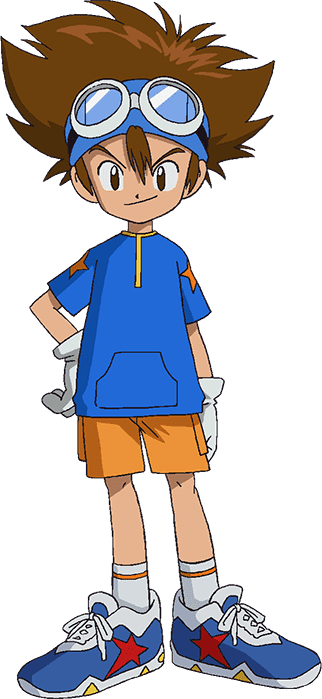
Yuko Sanpei as Taichi Yagami
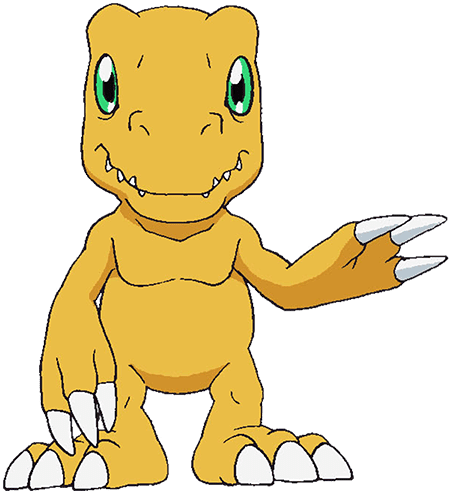
Chika Sakamoto as Agumon
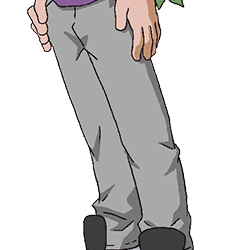
Daisuke Namikawa as Yamato Ishida
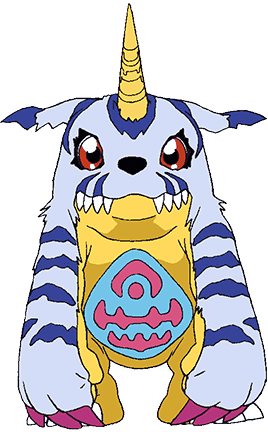
Mayumi Yamaguchi as Gabumon
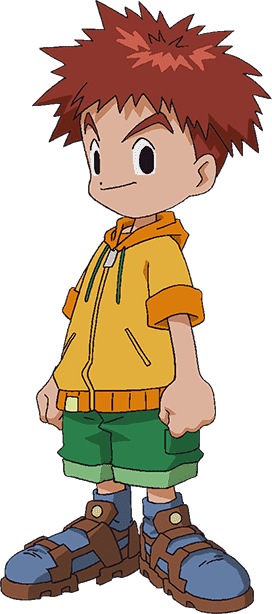
Yumiko Kobayashi as Koushiro Izumi
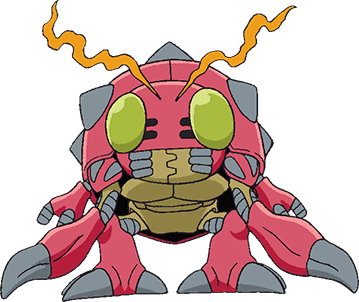
Takahiro Sakurai as Tentomon
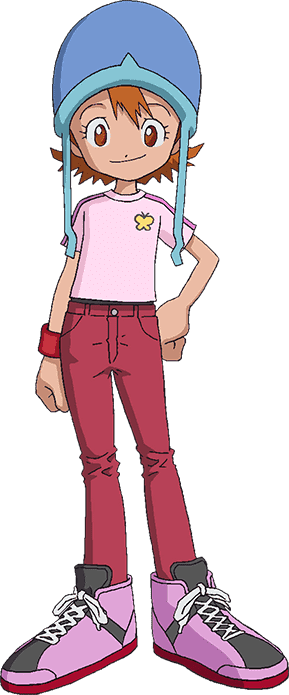
Ryoko Shiraishi as Sora Takenouchi
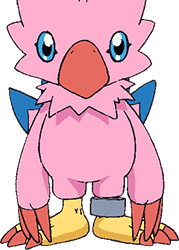
Atori Shigematsu as Piyomon
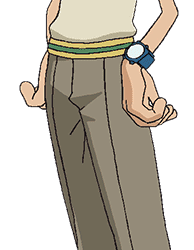
Takeshi Kusao as Jo Kido
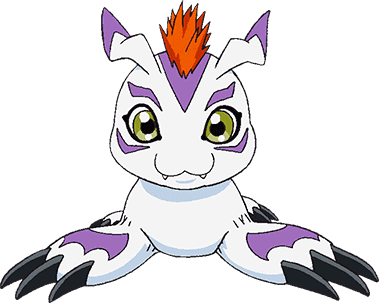
Junko Takeuchi as Gomamon
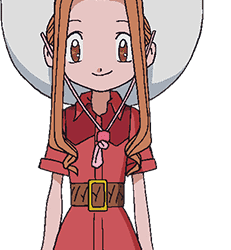
Marika Kouno as Mimi Tachikawa
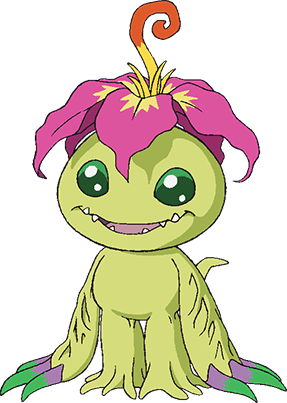
Kinoko Yamada as Palmon
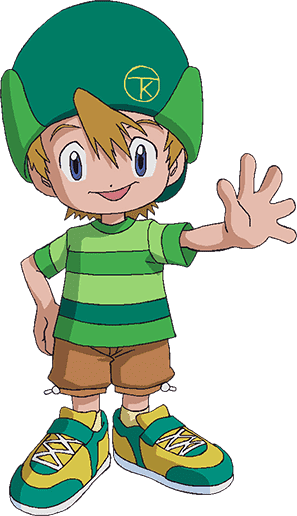
Megumi Han as Takeru Takaishi
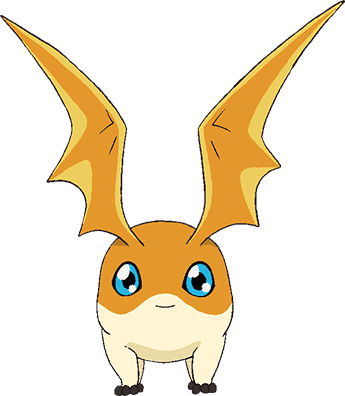
Miwa Matsumoto as Patamon
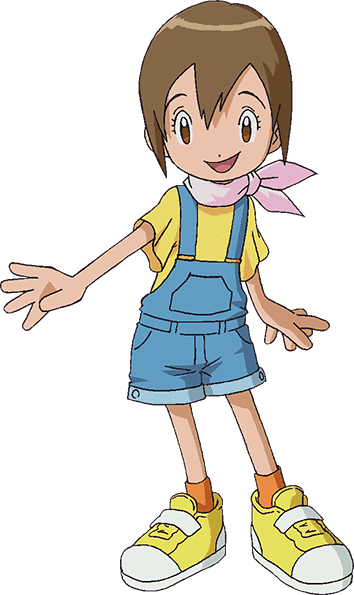
Misaki Watada as Hikari Yagami
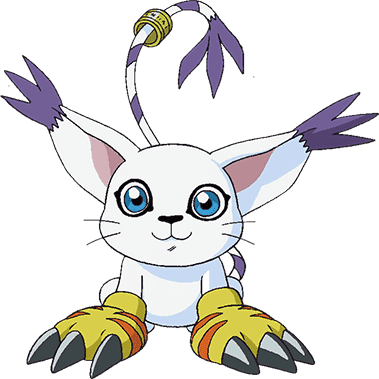
Mie Sonozaki as Tailmon
Masako Nozawa as Narrator
#Digimon Adventure 2020#Digimon Adventure Psi#Digimon Adventure#Digimon#Toei Animation#anime#TV anime
54 notes
·
View notes
Photo










Creepy (Kiyoshi Kurosawa, 2016)
59 notes
·
View notes
Text
elibean replied to your post “man, folks on here talk like FMA is the only manga they’ve ever read...”
You should rec some women-written manga! ;D
YOU GOT IT, BUB
Jun Mochizuki’s Pandora Hearts
Ryoko Kui’s Delicious in Dungeon
Adachitoka’s Noragami
Asa Higuchi’s Big Windup
Riyoko Ikeda’s infinitely influential Rose of Versailles and Claudine
Takako Shimura’s LBGT+ works like Wandering Son and Sweet Blue Flowers
anything by Akiko Higashimura but Jellyfish Princess and Tokyo Tarareba Girls specifically
Ooima Yoshitoki’s A Silent Voice and her currently publishing To Your Eternity
Kamome Shirahama’s Witch Hat Atelier
Yuki Urashibara’s Mushishi or Cats are Facing West
anything by Kaoru Mori, Emma and A Bride’s Story being the standouts (my favorite is Shirley!)
Kazue Kato’s Blue Exorcist
anything by Aya Nakahara, starting with Lovely Complex
Shinobu Ohtaka’s Magi
Izumi Tsubaki’s Monthly Girls’ Nozaki-kun
Yuki Midorikawa’s Natsume's Book of Friends
Chica Umino’s March Comes in Like a Lion and Honey and Clover
and of course works by CLAMP, Rumiko Takashashi, and Naoko Takeuchi
#one half of the promised neverland is a lady and the other half is unknown#haikyuu's author Haruichi Furudate is widely believed to be female#almost put kimetsu no yaiba's author on here but they would prefer gender neutral pronouns#shoutout to yuhki kamatami who is x-gender and asexual and you should read their work our dreams at dusk and nabari no ou#a lot of women in the industry use pen names so people will buy their shonen work. it be like that sometimes#i'd also like to mention that a majority of yuri manga is written by women#chitchat paddywhack#animoose and mango
53 notes
·
View notes
Text
Recommended jdramas last decade
Given that the ratings list isn't exactly diverse and lots of interesting dramas didn't make the top cut, I thought I'd come up with a recommendation list. I remember back in the 2000s J-dramas were all the rage but now there seems to be much less interest in them outside of Japan, but that doesn't necessarily mean the quality is less! My preferred genres are more on the tense and action-packed side, and I rarely watched rom-coms or slice of life dramas until more recently. Nevertheless there are some very topical ones that are worth mentioning. Police procedurals 1) BOSS 1 & 2: another one of my perennial favourites. Set at the pace of American procedurals, equipped with snappy humour and quirky characters, it is the perfect amalgamation of funny, touching and gripping. 2) Strawberry Night: the original series with the gorgeous Takeuchi Ryoko and Nishijima Hidetoshi is leagues above the remake. It's much darker than BOSS but perhaps more resonant because of it. 3) Kinkyuu Torishirabeshitsu seasons 1-3: similar to BOSS, this cast consists of veteran supporting actors who play off well against each other. The cases range from satisfying to acutely dissatisfying, just as in real life. 4) Keiji 7-nin: similar to KinTori, the cast consists of some solid veteran actors, and the cases range from triumphant to depressing. There are some interesteing back stories to the characters, but it's not as well developed as you might hope. 5) Zettai Reido season 3: I tried to go back and rewatch the first 2 seasons, but it's a completely different story. Consisting of mostly a young green cast, somehow the actors have fit the roles so well that it doesn't irk. The cases mostly end on a note of despair and helplessness, as the system rolls over and quashes anyone in its way. 6) CRISIS: for the longest time I confused this with BG as the set-up of the characters are quite similar. It's very well-made, but again the characters function in a morally grey territory and is an interesting digression from the usual straight procedural. Crime solvers 1) 99.9 seasons 1 & 2: quirky and humorous, but also full of heart, and with Kagawa playing the straight foil to MatsuJun's insolent lawyer, it is almost perfect except for the lack of insipration in its cases. 2) Unnatural: I still consider this to have one of the best developed back-stories and characterisations of any crime-solver or police procedural. The script is by Noki Akiko, and it has a sensitivity to it that is not often seen in this cerebral genre. 3) Galileo seasons 1 & 2: released back in the day when Fukuyama Masaharu was still hugely popular, this was long enough ago that I don't actually remember what I liked about it, except that I do like and recommend it. 4) Kagi no kakatta heya: out of Arashi, I've never thought of Ohno as the best actor but when the role fits him, it fits like a glove. Based on a manga, it has the occasional unrealistic plot holes that comes with this genre, but overall it's well-produced, funny and the 3 main characters play off each other to hilarious effect. Medical dramas 1) Code Blue 1 & 2 - Hayashi Koji has a remarkable grasp on the mentality of young doctors. The first two seasons of Code Blue are on my perennial recommend list 2) Black Pean - I hesitated about whether to put this down, but there's actually very few medical dramas I recommend even though I watch a lot of them. I did enjoy Black Pean for its production quality and the dedication of the actors, but the script is an absolute let-down. 3) DOCTORS seasons 1-3 - this subversive drama straddles medical and comedy, and Sawamura's character slowly turned from a straight, obliviously helpful do-gooder, to an outright calculating manipulator but with the best of intentions. It is a fascinating premise for a main character and I'd recommend it purely for that. Rom-coms 1) Nigeru wa haji daga yaku ni tatsu - I really shouldn't put something I couldn't keep watching as the top, but apart from the fact I couldn't stand the 2 main actors, the story was an interesting philosophical exploration of what a live-in relationship means in practical terms. 2) Hotaru no Hikari 2 - again this was so long ago I couldn't remember much of it, except it was nice and sweet, although I think the first season was better contained. 3) Watashi ga ren'ai dekinai riyuu - I'm not quite sure this qualifies as rom-com as the characters didn't all get their happily ever after (which is actually quite rare in Japanese dramas). The story revolves around three women, each progressive yet conformative in their own ways, and how they dealt with the social expectations of courtship. A nice watch and probably a realistic window into how romance works in Japan. Underdog victories 1) Doctor X series 1-6 - Look, as much as I HATE this series as a medical drama wannabe, it is the defining story for the underdog against a conservative hierachical paternalistic world. It is full of impossible triumphs, no bad outcome ever happens and the main character never loses. 2) Shitamachi Rocket 1 & 2 - arguably the series that started the Ikeido Jun craze, it turned something boring and nerdy (rocket and machine engineering) into gripping rollercoaster drama. Well-acted and well-scripted, it made you cheer for the characters even as your real boring self acknowledge how ludicrous their victories are. 3) Grand Maison Tokyo - this is a story of redemption through the shared love of food, brought together by a team of great actors who clearly had great fondness of each other. There are some silly moments, but a lot of it was touching, sweet and highly rewarding, just like a beautiful meal. 4) No Side Game - I tossed up putting Riku-Ou in as well, but in the end I thought No Side Game was slightly better. Both based around sports (marathon and rugby, respectively), it's full of hot-blooded idealism about loyalty, teamwork and dedication, a shounen manga fairytale for adults. Slice of life 1) Gibo to musume no Blues - I'm really not a "slice of life" person, but this drama exceeded all expectations. It starts off odd and a little slow, but each episode will make you laugh and then cry a little about what it means to be family, all the silly moments, the frustrating moments and the tender moments that we share. 2) Ie-uru onna (season 1) - I'm not too sure this quite fits in "slice of life" or comedy, because the main character really is rather odd, but the first season had some beautifully reflective stories, again about what it means to be family and what home means to the different people in society. I don't know what happened in the 2nd season, but it's definitely lost that evocative touch. 3) Jimi ni sugoi! - maybe because the publishing industry interests me, but I thought this was a very cute series with some good inside tips about publishing, but also can be drawn to reflect on how people should view their vocation. Almost a rom-com, not quite a comedy, but a really nice light-hearted series with Ishihara Satomi at her most radiant. 4) Watashi, teiji de kaerimasu - this was a surprisingly sweet take on difficult problems that aren't necessarily unique to the Japanese workplace - the clash of generational values, the internal sense of inadequacies and the people who are deterimentally unable to say no. The main character, rather than being the focus of growth as often happens in these dramas, turn out to be the mediator as she uses her previous painful experiences of burnout to guide others through their own struggles. Suspense 1) 3-nen A-gumi: while prone to hyperbole and melodrama, this was a very nice fable of adulthood and the idea that once you are an adult, you must take responsibility for the consequences of your own actions, told through the microcosm that is Class 3A. Highly recommended. 2) BG: slick and well-produced, as many of KimuTaku's dramas are, it had action and suspense in good measures but unfortunately wasn't quite carried by the plot. Each individual case was interesting enough, but the main plot was rather convoluted and disappointing. 3) Ouroboros: almost similar to Toma's earlier Maou, it was cerebral, suspenseful and full of a sense of inevitable tragedy. The ending was more than it could chew, but it gave a good effort. 4) Kazoku Game: one of those rare dramas that really suited Sakurai Sho, where he was the intelligent and highly sociopathic and slightly psychotic home tutor for a highly dysfunctional family. A fascinating watch. Comedy I have to say this is a genre I struggle with. I'd happily watch slapstick and screaming in an anime, but live action is just awks. There's been some popular ones that I haven't watched but have heard good things about: - Tami-Ou: the sleazy prime minister accidentally swaps body with his extremely introverted son, and they both have to try and continue the facade. - Kyou kara ore wa: high school kids pretending they're better than they're really are, we've all been through that. This is not an exhaustive list by any means. There's a lot of well-reviewed dramas that I hadn't been able to catch, especially in the first half of the decade. There's a bunch of highly popular dramas that I hadn't been able to continue, but clearly they've got their appeal to the Japanese audience. I think in general Japanese dramas do human drama very well, especially the various relationships we have in our lives and how they interact. It's not great at doing the K-drama fairytale romance. I hope the list helps people try out some new things, or you could check out the top ratings list for other safe bets.
14 notes
·
View notes
Photo





NAKAYOSHI 65th Anniversary
Exhibition Merchandise: Postcard Sets
Set A - Princess Knight (Osamu Tezuka), Aozora ni Tobidase! (Yamato Kazunori), Jigoku de Mes ga Hikaru (Ryoko Takashina), Ohayō! Spank (Shizue ♡ Takanashi / Shun'ichi Yukimuro), Youkihiden (Suzue Miuchi)
Set B - Nanairo Magic (Yu Asagiri), Wankorobee (Yuriko Abe), Gekkabijin (Satoru Hiura), Goldfish Warning! (Neko Nekobe), Miracle☆Girls (Nami Akimoto)
Set C - Sailor Moon (Naoko Takeuchi), Azuki-chan (Chika Kimura / Yasushi Akimoto), Kurumi and the Seven Dwarves (Ryo Takase), Magic Knight Rayearth (CLAMP), Delicious! (Ayumi Yui / Miyuki Kobayashi)
Set D - CardCaptor Sakura Clear Card (CLAMP), Nervous Venus (Chie Waseda), ローレライは月の夜に (Tsunami Unno), Mysterious Thief Saint Tail (Megumi Tachikawa), UFO Baby (Mika Kawamura)
Set E - Shugo Chara! (PEACH-PIT), Tokyo Mew Mew (Reiko Yoshida / Mia Ikumi), Mermaid Melody Pichi Pichi Pitch (Michiko Yokote and Pink Hanamori), Sugar Sugar Rune (Moyoco Anno), Kitchen Princess (Miyuki Kobayashi / Natsumi Andō), Futari wa Pretty Cure (Futago Kamikita / Izumi Todo)
#nakayoshi#shoujo#precure#princess knight#sailor moon#cardcaptor sakura#magic knight rayearth#clear card arc#mew mew power#mkr#ccs#bssm#saint tail#sugar sugar rune#futari wa precure
14 notes
·
View notes
Photo

Over the next few days, we’ll be looking back on the year end charts for the years that were covered in the 2019 editions of Oricon Flashback. Next up is 1994.
Read more on aramajapan.com
#B'z#CHAGE&ASKA#DEEN#DREAMS COME TRUE#Hirose Kohmi#Mariya Takeuchi#Miyuki Nakajima#Mr.Children#Ohguro Maki#shinohara ryoko#Tetsuya Komuro#trf#WANDS#Yumi Matsutoya#ZARD
0 notes
Text
Digimon Adventure, presentato il cast per il reboot della serie
La prima indimenticabile avventura dei Digiprescelti tornerà sulle tv giapponesi da aprile in una nuova veste.

Svelato assieme ad un nuovo breve trailer il cast di “Digimon Adventure:”, la nuova serie animata del franchsie Digimon che debutterà sulle tv giapponesi il 5 aprile, accompagnata dal lancio di un nuovo gioco di carte collezionabili. L’anime sarà ambientato nel 2020 e vedrà tornare come protagonisti i giovani Digiprescelti della storica prima stagione della serie, andandone a costituire un vero e proprio reboot.
La sigla di testa della serie tv sarà ad opera di Takayoshi Kanimoto (Digimon Tamers, Dragon Ball Z Kai), mentre quella di coda sarà cantata da Chie Fujikawa.
youtube
Per i protagonisti sono state scelte tutte nuove voci, mentre per i loro digimon ritroviamo quasi tutti i rispettivi doppiatori storici, eccezion fatta per quanto riguarda Gatomon.
Taichi Yagami (Tai Kamiya): Yuko Sanpei / Agumon: Chika Sakamoto

Yamato Ishida (Matt Ishida): Daisuke Namikawa / Gabumon: Mayumi Yamaguchi

Sora Takenouchi: Ryoko Shiraishi / Piyomon: Atori Shigematsu

Koshiro Izumi (Izzy): Yumiko Kobayashi / Tentomon: Takahiro Sakurai

Mimi Tachikawa: Marika Kouno / Palmon: Kinoko Yamada

Joe Kido: Takeshi Kusao / Gomamon: Junko Takeuchi

Takeru Takaishi (T.K.): Megumi Han / Patamon: Miwa Matsumoto

Hikari Yagami (Kari): Misaki Watada / Gatomon: Mie Sonozaki

A dirigere il progetto presso Toei Animation c’è Masato Mitsuka (Mahoutsukai Precure!), la sceneggiatura è ad opera di Atsuhiro Tomioka (Inazuma Eleven, Pokémon, Beyblade Burst), mentre il design dei personaggi torna ad essere curato da Katsuyoshi Nakatsuru (Digimon Adventure, Digimon Adventure: Last Evolution Kizuna). Il comparto animazioni è supervisionato da Akihiro Asanuma (Digimon Xros Wars), il direttore artistico è Ryouka Kinoshita (Little Witch Academia, Keep Your Hands Off Eizouken!) e l’impostazione dei fondali è seguita da Toshiki Amada (Fire Force, Keep Your Hands Off Eizouken!).
Come citato, il celebre franchise nasce con la serie televisiva “Digimon Adventure” andata originariamente in onda nel 1999, seguita nel 2000 da “Digimon Adventure 02″ che introdusse un’altro gruppo di Digiprescelti.
Fra il 2015 e il 2018 è uscita un’esalogia di film chiamata “Digimon Adventure tri.”, la quale mette in scena una nuova avventura per tutti i protagonisti ormai studenti delle scuole superiori.
Il 21 febbraio di quest’anno, invece, è uscita nei cinema giapponesi la pellicola “Digimon Adventure: Last Evolution Kizuna” nella quale ritroviamo Taichi e gli altri all’università.
Autore: SilenziO))) (@s1lenzi0)
[FONTE]
#digimon adventure#digimon adventure:#digimon#anime#serie tv#sci-fi#fantasy#newsintheshell#news in the shell#cartoni animati#animazione
1 note
·
View note
Text
Meet the New All-Star Cast for the Digimon Adventure: TV Anime With Trailer Previewing Greymon
Digimon Adventure:, the reboot of the original Digimon Adventure TV anime series, hits Japanese TV screens on April 5, and to whip fans into a Digi-craze, a new trailer was released on March 17 showcasing Greymon in their new animated glory alongside all the new cast information.
youtube
Much like Digimon Adventure Tri, the voice cast for the Digidestined have once again been changed, with Yuko Sanpei (Boruto in BORUTO: NARUTO NEXT GENERATIONS) leading the team as Taichi, with Dragon Ball Super veterans Takeshi Kusao (Trunks) playing Joe, and Masako Nozawa (Goku) acting as the narrator, returning from Digimon Tamers, where she also narrated the series. On the other hand, the only replaced Digimon voice was Tailmon, with Mie Sonozaki taking over from Yuka Tokumitsu, who has played Tailmon in the entire franchise thus far, including Digimon Adventure LAST EVOLUTION Kizuna.
Here is the full voice cast with the full character designs.
New Digidestined Voice Cast
Yuko Sanpei as Taichi Yagami
Daisuke Namikawa as Yamato Ishida
Ryoko Shiraishi as Sora Takenouchi
Yumiko Kobayashi as Koushiro Izumi
Marika Kouno as Mimi Tachikawa
Takeshi Kusao as Joe Kido
Megumi Han as Takeru "T.K." Takaishi
Misaki Watada as Hikari Yagami
Partner Digimon Voice Cast
Chika Sakamoto as Agumon
Mayumi Yamaguchi as Gabumon
Atori Shigematsu as Piyomon
Takahiro Sakurai as Tentomon
Kinoko Yamada as Palmon
Junko Takeuchi as Gomamon
Miwa Matsumoto as Patamon
Mie Sonozaki as Tailmon
Previously released key visual:
To celebrate the start of the TV anime series, a new site called Digimon Parade will open up on March 30 where you can post messages and your favorite characters and they’ll appear on the, very adorable, website.
The website for the new TV anime series released a synopsis on its website, which we translated below:
2020 AD.
Networks are now an integral part of human life. But humans are unaware that beyond the network an infinite world exists. The digital world. And the creatures called Digimon that live there...
A large-scale network failure occurs in the Tokyo metropolitan area. A flickering signal or garbled screens are prevalent. The news report that it’s cyber terrorism.
The main character is Taichi Yagami, a fifth-grader living in a tower apartment near Tokyo.
He was home alone to prepare for the weekend summer camp. His mother and sister, Hikari, were on their way to Shibuya but got stuck on an affected train with failed breaks. Taichi hurries to Shibuya to help his mother and sister, but the moment he heads to the platform at the station-
A mysterious phenomenon overtakes the “DigiDestined,” transporting Taichi to the digital world! The children meet their partner Digimon and embark on an unknown “adventure!”
Akiyoshi Hongo is credited with the original plan for the series, with Masato Mitsuka (Maho Girls Precure!) helming the series direction. The series will be composed by Atsuhiro Tomioka (Pokémon XY, Ace Attorney, scripts on Dragon Ball Super) with character designs by Katsuyoshi Nakatsuru (original character designer on Digimon Adventure and 02). Akihiro Asanuma (Digimon Frontier, The Kindaichi Case Files Returns) will be the animation director, while Ryoka Kinoshita (Ascendance of a Bookworm) and Toshiki Amada (Keep Your Hands Off Eizouken!, Fire Force) will be handling the Art Direction and Art Setting. Toshihiko Sahashi (Reborn!, Mobile Suit Gundam Seed) will be conducting the music for the series. Fuji TV, Yomiuri Advertising Agency, and Toei Animation will be producing the series.
The new Digimon series, Digimon Adventure:, starts broadcasting in Japan from April 5. The last film in the old, unbooted universe, Digimon Adventure LAST EVOLUTION Kizuna, will be released in theaters in North American on March 25th. You can read our review of the film here.
Source: Comic Natalie
----
Daryl Harding is a Japan Correspondent for Crunchyroll News. He also runs the YouTube channel about Japan stuff called TheDoctorDazza, tweets at @DoctorDazza and posts photos of his travels on Instagram.
0 notes
Text
Manga History
The history of manga is said to originate from scrolls dating back to the 12th century, and it is believed they represent the basis for the right-to-left reading style. During the Edo period (1603–1867), Toba Ehon embedded the concept of manga. The word itself first came into common usage in 1798, with the publication of works such as Santō Kyōden's picturebook Shiji no yukikai (1798), and in the early 19th century with such works as Aikawa Minwa's Manga hyakujo (1814) and the Hokusai Manga books (1814–1834). Adam L. Kern has suggested that kibyoshi, picture books from the late 18th century, may have been the world's first comic books. These graphical narratives share with modern manga humorous, satirical, and romantic themes. Some works were mass-produced as serials using woodblock printing.
Writers on manga history have described two broad and complementary processes shaping modern manga. One view represented by other writers such as Frederik L. Schodt, Kinko Ito, and Adam L. Kern, stress continuity of Japanese cultural and aesthetic traditions, including pre-war, Meiji, and pre-Meiji culture and art. The other view, emphasizes events occurring during and after the Allied occupation of Japan (1945–1952), and stresses U.S. cultural influences, including U.S. comics (brought to Japan by the GIs) and images and themes from U.S. television, film, and cartoons (especially Disney).
Regardless of its source, an explosion of artistic creativity occurred in the post-war period, involving manga artists such as Osamu Tezuka (Astro Boy) and Machiko Hasegawa (Sazae-san). Astro Boy quickly became (and remains) immensely popular in Japan and elsewhere, and the anime adaptation of Sazae-san drawing more viewers than any other anime on Japanese television in 2011. Tezuka and Hasegawa both made stylistic innovations. In Tezuka's "cinematographic" technique, the panels are like a motion picture that reveals details of action bordering on slow motion as well as rapid zooms from distance to close-up shots. This kind of visual dynamism was widely adopted by later manga artists. Hasegawa's focus on daily life and on women's experience also came to characterize later shōjo manga. Between 1950 and 1969, an increasingly large readership for manga emerged in Japan with the solidification of its two main marketing genres, shōnen manga aimed at boys and shōjo manga aimed at girls.
In 1969 a group of female manga artists (later called the Year 24 Group, also known as Magnificent 24s) made their shōjo manga debut ("year 24" comes from the Japanese name for the year 1949, the birth-year of many of these artists). The group included Moto Hagio, Riyoko Ikeda, Yumiko Ōshima, Keiko Takemiya, and Ryoko Yamagishi. Thereafter, primarily female manga artists would draw shōjo for a readership of girls and young women. In the following decades (1975–present), shōjo manga continued to develop stylistically while simultaneously evolving different but overlapping subgenres. Major subgenres include romance, superheroines, and "Ladies Comics"
Modern shōjo manga romance features love as a major theme set into emotionally intense narratives of self-realization. With the superheroines, shōjo manga saw releases such as Pink Hanamori's Mermaid Melody Pichi Pichi Pitch Reiko Yoshida's Tokyo Mew Mew, And, Naoko Takeuchi's Pretty Soldier Sailor Moon, which became internationally popular in both manga and anime formats. Groups (or sentais) of girls working together have also been popular within this genre. Like Lucia, Hanon, and Rina singing together, and Sailor Moon, Sailor Mercury, Sailor Mars, Sailor Jupiter, and Sailor Venus working together.
Manga for male readers sub-divides according to the age of its intended readership: boys up to 18 years old (shōnen manga) and young men 18 to 30 years old (seinen manga); as well as by content, including action-adventure often involving male heroes, slapstick humor, themes of honor, and sometimes explicit sex. The Japanese use different kanji for two closely allied meanings of "seinen"—青年 for "youth, young man" and 成年 for "adult, majority"—the second referring to pornographic manga aimed at grown men and also called seijin ("adult") manga. Shōnen, seinen, and seijin manga share a number of features in common.
Boys and young men became some of the earliest readers of manga after World War II. From the 1950s on, shōnen manga focused on topics thought to interest the archetypal boy, including subjects like robots, space-travel, and heroic action-adventure. Popular themes include science fiction, technology, sports, and supernatural settings. Manga with solitary costumed superheroes like Superman, Batman, and Spider-Man generally did not become as popular.
The role of girls and women in manga produced for male readers has evolved considerably over time to include those featuring single pretty girls (bishōjo) such as Belldandy from Oh My Goddess!, stories where such girls and women surround the hero, as in Negima and Hanaukyo Maid Team, or groups of heavily armed female warriors (sentō bishōjo)
With the relaxation of censorship in Japan in the 1990s, an assortment of explicit sexual material appeared in manga intended for male readers, and correspondingly continued into the English translations. However, in 2010 the Tokyo Metropolitan Government passed a bill to restrict such content.
The gekiga style of storytelling—thematically somber, adult-oriented, and sometimes deeply violent—focuses on the day-in, day-out grim realities of life, often drawn in a gritty and unvarnished fashion. Gekiga such as Sampei Shirato's 1959–1962 Chronicles of a Ninja's Military Accomplishments (Ninja Bugeichō) arose in the late 1950s and 1960s partly from left-wing student and working-class political activism and partly from the aesthetic dissatisfaction of young manga artists like Yoshihiro Tatsumi with existing manga.

3 notes
·
View notes